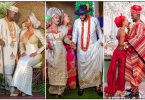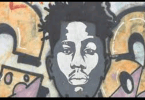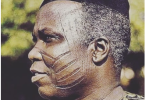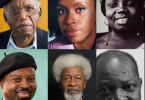Nigerian dance constitutes a very important aspect of the socio-cultural identities of the Nigerian people. Every single Nigerian tribe has its own functional sequence of dance steps. In fact, many history and culture researchers point out that traditional Nigerian music and dance were created to perform specific functions. They were not merely created for entertainment. Contemporary dance, on the other hand, serves visually appealing and entertainment purposes, when combined with the music that inspired it.
In a way, traditional dance is often a re-enactment of that very event for which it was originally designed. Be it religious rites, occupational motions/activities, family or social celebrations, and the like. Yet again, music is an accompaniment created to match traditional Nigerian dance; however, the opposite is the case with contemporary dance. Additionally, each form of Nigerian dance conveys certain messages, meanings, and cultural symbols; they tell stories of their history and heritage.
In all cases, Nigerian dance and music are vital channels of emotional release, self-expression, communication, and celebration in all occasions. has become
The Origin of Traditional Nigerian Dance
Traditional dance is a functional performing art which belongs to an indigenous group of people; and it is part of their identity. It is a sequence of body motions strongly influenced by the local beliefs, specific purpose(s), and music forms of a tribal group. Traditional Nigerian dance is as varied as the hundreds of ethnic tribes in the nation. These traditional dances were created to serve various functions. They include worshiping the gods, celebrating marriages, marking burials, as war chants, harvests songs, and other cultural and social celebrations.
Furthermore, a good number of traditional dances evolved out of ‘occupational dance’. These are dances created by practitioners of certain occupations as a motivation, or a form of relaxation and amusement (following a fulfilling day’s job). These occupational dances often depict the nature of their jobs – such as that of a blacksmith, fisherman, hunter, warrior, wood carver, or farmer.
The Swange dance of the Tiv people for instance, emerged out of songs and dances created to entertain farmers while resting. The Nupe fishermen also developed their skilled net-throwing into a cultural dance. Native hunters were also known to mimic the motions of hunted animals, or re-enact their own exploits. There are several other cases of occupational dances developed into full traditional Nigerian dances.
Yet again, spiritual or ritual/religious rites that are sacred to a particular ethnic group were often accompanied by a particular dance. They were performed by traditional priests, cult leaders, and key worshippers. And over time, they often become identified with that particular tribe.
Types of Traditional Nigerian Dance
We have the following forms of traditional Nigerian dance in Nigeria:
Atilogwu: A sequence of acrobatic and vigorous dance steps identified with the Igbo ethnic group. It is actually a combination of five traditional dances: Anam, Anaku, Ochanja, Adunjaja, and Ogwulogwu.
Swange: A popular dance among tribes in Benue state, it involves alternating slow and quick flexible movements. It is sometimes called ‘boneless’ dance.
Ikpirikpi-Ogu: Another Igbo dance typical of the Anam people of Abia state, which is actually a war dance. It was performed by warriors on their return from a conquest, in celebration of their courage and skill. This peculiar dance is now featured among other cultural dances during cultural shows and festivals.
Sharo: A well-known dance among the Fulani and Hausa people of northern Nigeria. The dance is typically performed as part of a rite of passage. It culminates in allowing the most physically-fit male youth in the community to choose the prettiest lady as his bride.
Bata: A popular and vigorous Yoruba dance that originated from the worship of Sango, the god of thunder. It is also accompanied with the beats of the Bata drum.
Mmanwu: This is a masquerade dance typically done by the Igbo people. It is often performed during special events like cultural festivals or funerals. Select persons are chosen to dress up as masquerades; and these people are accorded special honor as well. In fact, such people are believed to be closer to the gods. And that the gods speak and work through those chosen to wear masquerade costumes.
Ekombi: A traditional dance of the Efik people of Cross River state, typically performed by young females.
Koroso: A common traditional dance amongst Hausa and Fulani tribes, it is vigorously done alone or in pairs. The dancers perform different motions, especially with their legs, to which rattles are tied.
Nkwa umu-Agbogho: Also called the ‘maiden dance’, it is a popular dance in Ebonyi state done by maidens of marriageable age. It involves the vigorous movement of the chest and waist, in order to attract potential suitors.
Gese: A Yoruba cultural dance named after a particular drum (that accompanies it). It is performed in worship of native gods.
Ukwata: This dance belongs to the Abbi people of Delta state, and is performed at the Ukwata festival. It is a mimicry of the movement of water animals – like fishes and crocodiles. The dance has religious origins (likely a form of homage paid to local gods); and the performers wear blue and green costumes.
Several Forms of Contemporary Nigerian Dance
Certain cultural researchers believe that modern or contemporary dance in Nigeria evolved from two divergent sources that are fast blending together. The first source is from foreign influences – both from Western cultures and other African countries. Notable foreign dances injected into Nigerian dance culture include hip-hop, breakdance, Makossa, and Ghanaian Azonto. The second source is from traditional Nigerian dances themselves; meaning that these dances were modified or evolved into modernized versions. You will not often see young folks performing traditional dances in any public event, club, or party. Yet again, eager dancers will often infuse their own creative moves into contemporary dance.
Furthermore, a good deal of contemporary dances in Nigeria (and beyond) were created by popular artists to match and promote a particular song. Thus, the dance becomes an identity associated with that particular artist and the song. This strategy has been successfully employed to heavily promote the brand and image of several popular music artists.
Good examples of such contemporary Nigerian dances, in chronological order, include:
- Makossa (a vigorous waist dance which is a version of Congolese Soukous dance. It was promoted by francophone singers Awilo Logomba and Olomide in the late 1990s)
- Galala (a street/ghetto dance promoted by singers Daddy Showkey, Baba Fryo, Daddy Fresh, and others in the late 1990s)
- Suo (another ghetto dance created by singers Mad Melon and Mountain Black for their song ‘Danfo Drivers’)
- Alanta (created by singer Artquake)
- Azonto (a dance introduced by Ghanaian singer Fuse ODG through his ‘Azonto’ song. It was further promoted by singer Wizkid)
- Etighi (a native dance of Akwa Ibom people, promoted by singer Iyanya for his viral song ‘Kukere’)
- Skelewu (created by singer Davido)
- Shoki (created by singers Lil Kesh, Dre San, and Orezi)
- Sekem (created by singer MC Galaxy)
- Shakiti Bobo (created by singer Olamide)
- Shaku Skaku (created and promoted by singers Slimcase, Mr Real, and Idowest)
- Zanku (created by singer Zlatan Ibile, which involves a good deal of legwork)
- Tesumole (a creation of singer Naira Marley)
Final Words
Nigerian dance is a collection of evolutionary dances. They are a collection of Western hip-hop and breakdance styles; along with modified versions of traditional dances. Furthermore, modern Nigerian dance has for long become a channel for self-expression, creativity, communication, and therapy, and entertainment.







